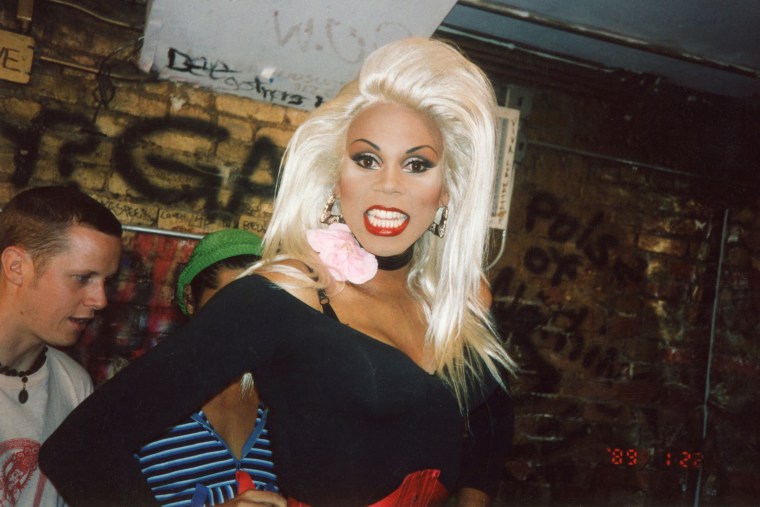When social media lit up earlier this month as the new season of “RuPaul's Drag Race” was announced, it was a clear sign that drag is more popular than ever and a permanent part of today's pop culture landscape. But that wasn't always the case: Back in the 1980s, the centuries-old art form of men donning dresses was fading during the hostile, conservative culture of the Reagan years.
But in New York City, deep in Manhattan’s gritty East Village, a creative revolution was brewing that would lead to an explosion of a new, exuberant kind of drag that would turn one queen into an international superstar and start a sea change in society's attitudes toward LGBTQ people.
The mothership of this subversive cultural invasion was a divey, Polish, rock joint on Avenue A called The Pyramid Club, where artists (Keith Haring, Andy Warhol), playwrights (Harvey Fierstein, Ethyl Eichelberger) and performers (Ann Magnuson, Madonna) gathered for a wild lineup of drag performers who ruled the roost with unusual, out-there shows.
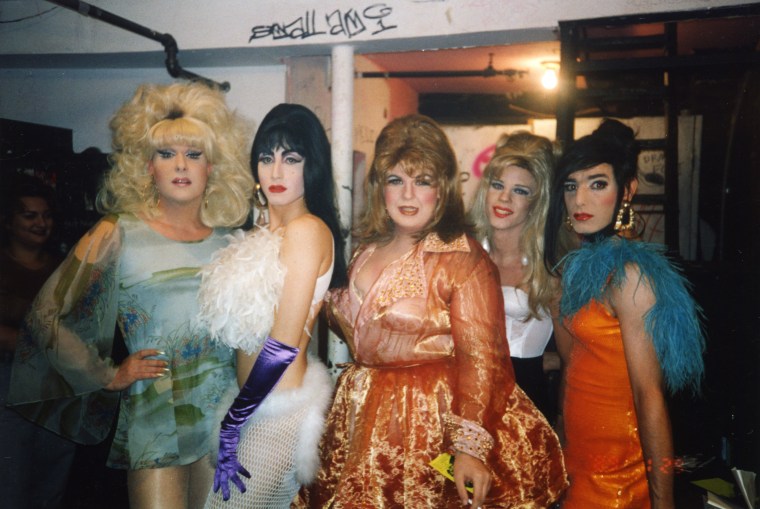
“Sunday was a real legendary night. Hapi Phace was the emcee, and Sister Dimension was the DJ. Lady Bunny and Tabboo! were go-go dancers,” recalled Linda Simpson, whose new photo book, “The Drag Explosion,” explores this downtown scene, which she not only documented with hundreds of 35 mm photos but also performed in. “I really was in the thick of things, and I was lucky, because my entry into the world of drag coincided with the amazing changes that happened over the next several years.”
Simpson, who had arrived in New York in the early 1980s to attend New York University, recalled drag being at an ebb at the time, noting that the “prevalent atmosphere of the gay scene was macho, and drag queens were looked at as kinda freaky.” But that began to change at the Pyramid's wild nights, which provided a home and a stage for future drag fixtures like Lady Bunny (née Jon Ingle). She arrived from Atlanta in 1983 with a band called The Now Explosion featuring Jon Witherspoon (who would later become the ditzy, party-girl drag performer Lahoma Van Zandt) and a tall, skinny boy with a radiant smile by the name of RuPaul Charles.
“A lot of people felt like they were home when they were at The Pyramid,” according to Lady Bunny, who said the supportive environment fostered experimentation.
“Once, when I just got a gumption to sing with a band, Ethyl came immediately up to stage after and was so encouraging,” she said of performer and playwright Ethyl Eichelberger, who was a fixture there as well as on the downtown theater scene. “So it made me think drag could do all kinds of different things.”
Witherspoon remembers The Pyramid as a surreal scene far removed from the traditional drag acts of the era that imitated gay icons like Judy Garland or Barbra Streisand.
“It could be poetry. Or it could be a rock band. It could be drag queens, half-drag queens, drag queens with their penises hanging out,” he said, recalling a lineup of nontraditional performers like Hattie Hathaway, Lypsinka and Flloyd. “There were so many characters. The Pyramid was just busting at the seams with incredible, surreal drag mixed with rock and crazy stuff.”
Witherspoon said it was all a reaction to the Reagan years and the AIDS epidemic, which was hitting the LGBTQ community hard.
“I remember it got really dark,” Witherspoon recalled, as the 1980s progressed and the death toll mounted. “So we really tapped into that fantasy thing that The Pyramid was serving and that Boy Bar was serving. It was kind of an escape into this beautiful world where everything's silly and not that serious.”
Boy Bar, a venue on nearby St. Marks Place, also expanded the scene by featuring a bevy of beauties putting on slightly more traditional lip-sync and dance shows. Legendary queens like the late Mona Foot (known for her signature Wonder Woman act) and Candis Cayne (from ABC's “Dirty Sexy Money”) made their mark on the club.
“The East Village nightlife scene was exploding,” Julian Fleisher, a longtime local resident who catalogued it all in his 1996 book “The Drag Queens of New York,” recalled. “The Pyramid was really super artsy, whereas Boy Bar was slightly more showbiz and had kind of polish to it. But all of it was joyful. It was about fabulousness and defiance and a kind of anarchic expression of liberation.”
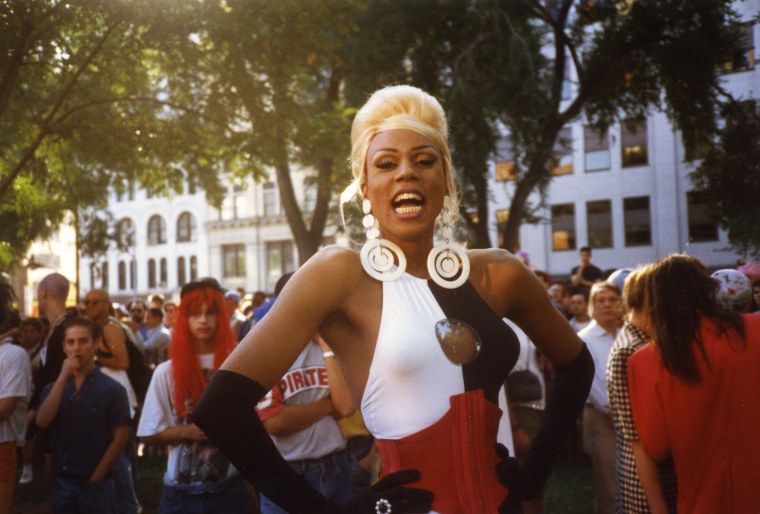
In 1992, one queen from this scene was getting herself all polished up for pop stardom. In November of that year, RuPaul's single “Supermodel” hit radio airwaves and MTV, rising to No. 2 on Billboard’s Dance Club Songs chart and sparking an international interest in the New York drag scene.
“When RuPaul burst into the mainstream, that was the real trigger for the drag explosion,” said Simpson, as drag queens found themselves in magazines, gossip columns and even advertising. “All of a sudden the media was quite intrigued. It really caused a sensation.”
While Simpson's book features intimate photographs of RuPaul backstage at The Pyramid, one of her shots captures the landmark moment when RuPaul appeared on “The Arsenio Hall Show” in 1993. Writer and former Village Voice' columnist Michael Musto said this marked the beginning of a positive shift in attitudes toward drag.
“The media really is a sign post for how society treats certain aspects of our culture,” Musto said. “RuPaul was grabbing a lot of headlines that changed things for drag queens. They were no longer seen as oddities — now they were potential celebrities.”
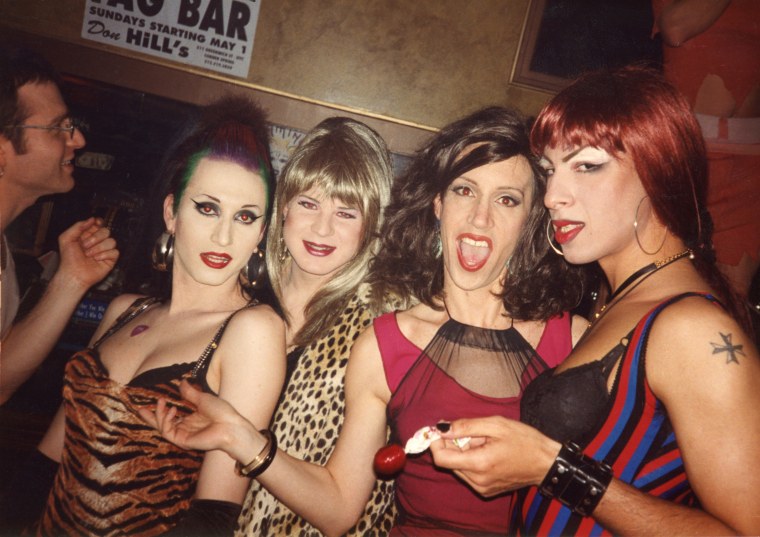
This newfound popularity was a boon for drag queens, as performers from the East Village suddenly found themselves in demand at clubs all over the city. Massive venues like The Roxy, Tunnel, The Palladium and Club USA hired them to bring their unique brand of glamour and glitter to the night.
“There were queens in all of these clubs,” recalled Witherspoon, who was a regular host as Lahoma Van Zandt at Peter Gatien's infamous Limelight. “On any given night, you could get in the cab and go to three or four clubs where there was drag everywhere.”
Another part of this drag explosion was Lady Bunny's Wigstock, which started as a do-it-yourself outdoor festival in the East Village in 1984 but became a major live event in the ‘90s with a move to the West Side piers, a crowd that numbered in the thousands and its own documentary. Lady Bunny said another high point was the 1995 release “To Wong Foo, Thanks for Everything! Julie Newmar,” a major studio production starring Patrick Swayze, Wesley Snipes and John Leguizamo as drag queens.
“That was a tipping point,” Lady Bunny said. “With that movie, you had a lot of the queens, including me, who were in it with male action stars in drag. And you knew that drag is mainstream. You're not something sick. You're not something that's to be kept under wraps. You are something for a mainstream audience.”
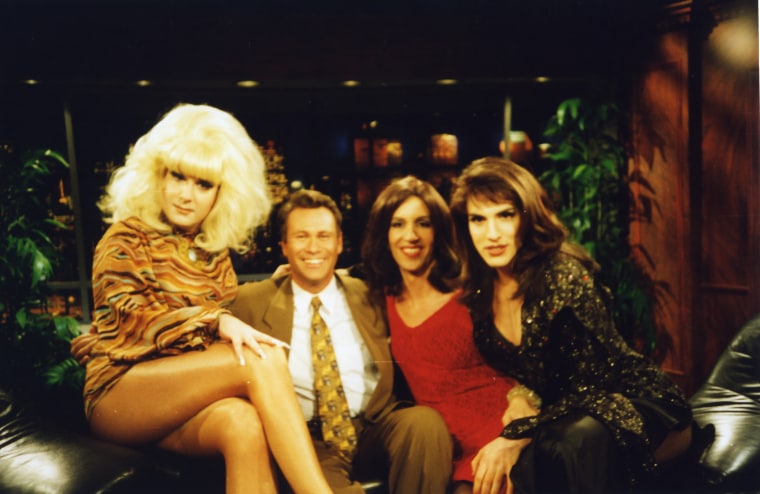
By the mid-1990s, drag divas were making regular appearances on local and national talk shows, like “Jerry Springer,” “Rolonda” and “Sally Jessy Raphael.” While this gave them another outlet to spread the message of fabulousness, drag eventually became overexposed, and the media lost interest, moving on to the next trend. Even RuPaul's 1996 VH1 talk show got cancelled.
“It was more the norm with media back then. They would take something like boy bands or grunge and hype it up and then just kind of leave it aside, and that's what happened to drag,” Simpson said of drag's decline in the late ‘90s, when big clubs got shut down by then-Mayor Rudolph Giuliani.
In 2009, RuPaul returned with the Logo series “RuPaul's Drag Race,” which kicked off the Drag 2.0 wave that continues today. It was during that resurgence that Simpson rediscovered the hundreds of photos she had taken decades earlier. Realizing she had something special, she created a slideshow on the original drag explosion.
“Drag queen history is actually kind of muddled for a lot of people,” Simpson said. “Younger people who have come to my slideshow had no idea that this whole big scene in the late-’80s to mid-’90s had even happened and how the drag explosion that I cover really set the pace for what's going on now.”
Supported by social media outlets like YouTube and Instagram, drag appears here to stay and has an even wider acceptance than it did in its ‘90s heyday.
“Drag will be a constant in our culture,” Musto said. “I'm very happy for Linda to have documented it. It's become an invaluable treasure trove of New York queer history.”
